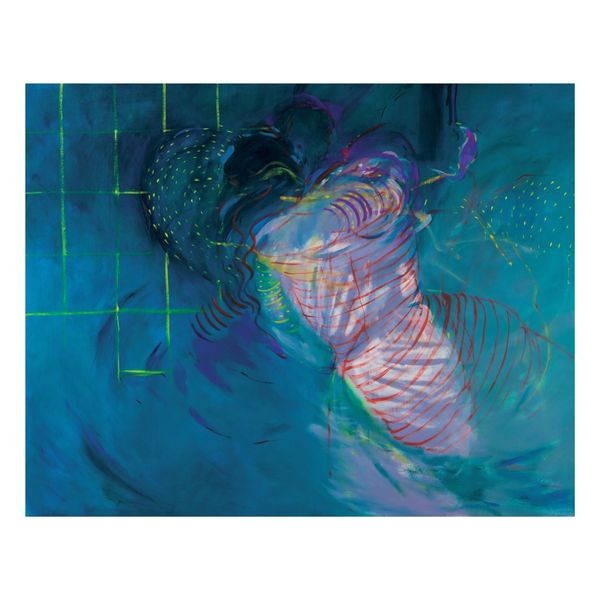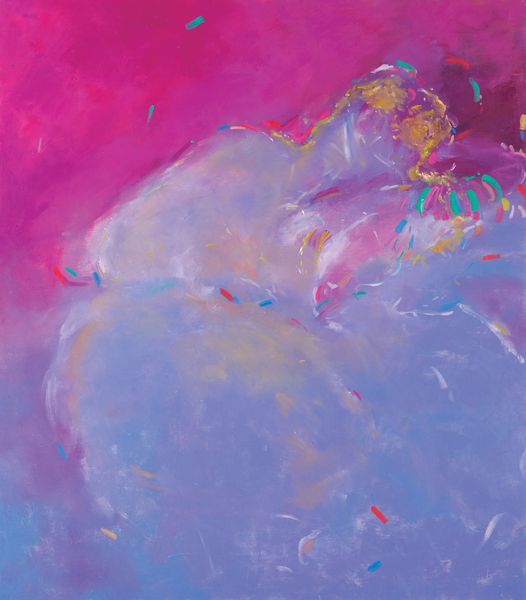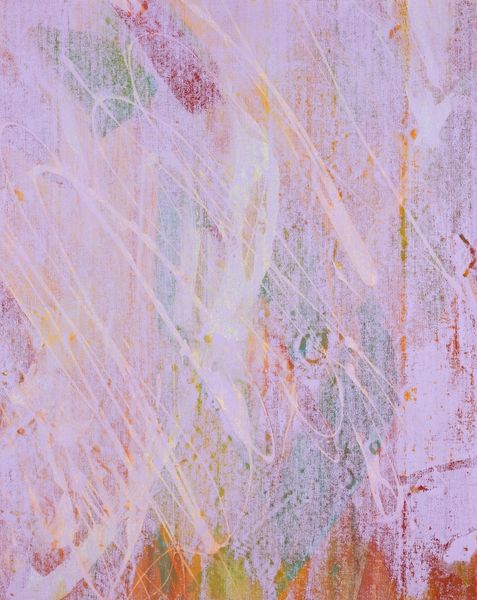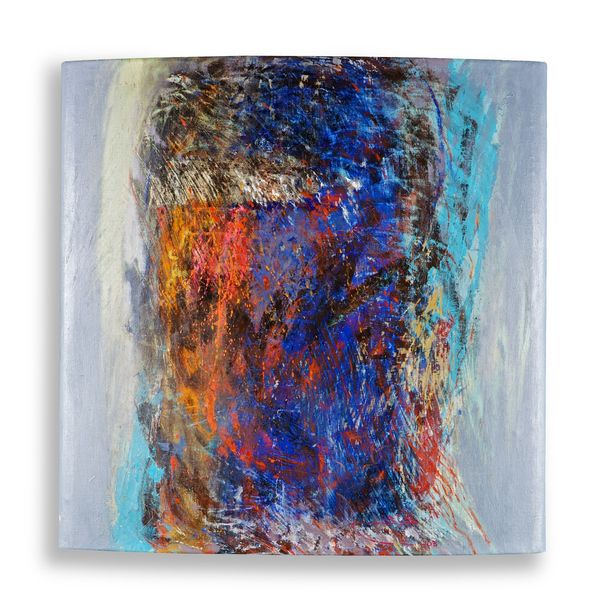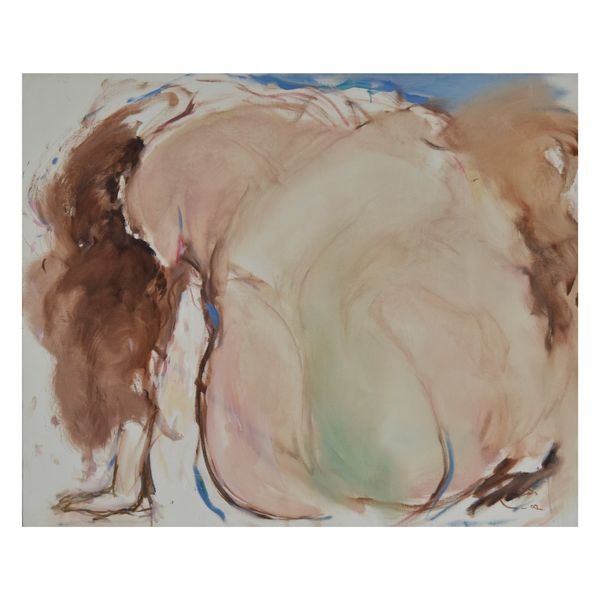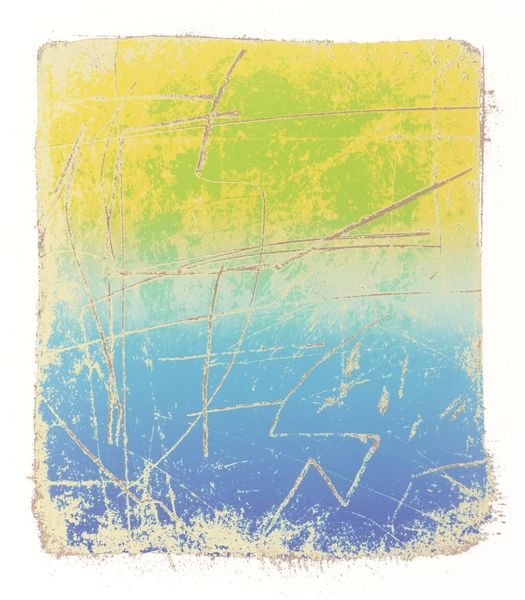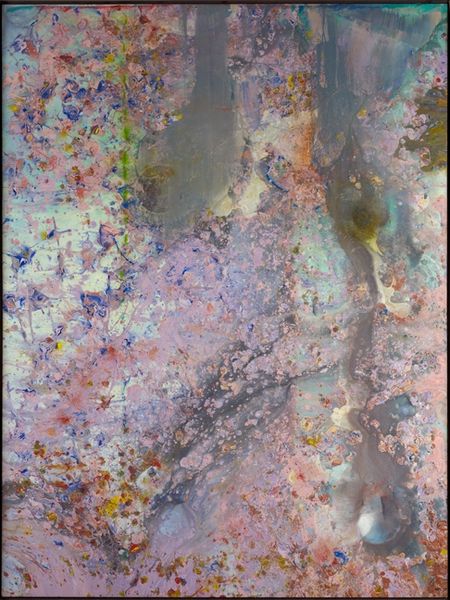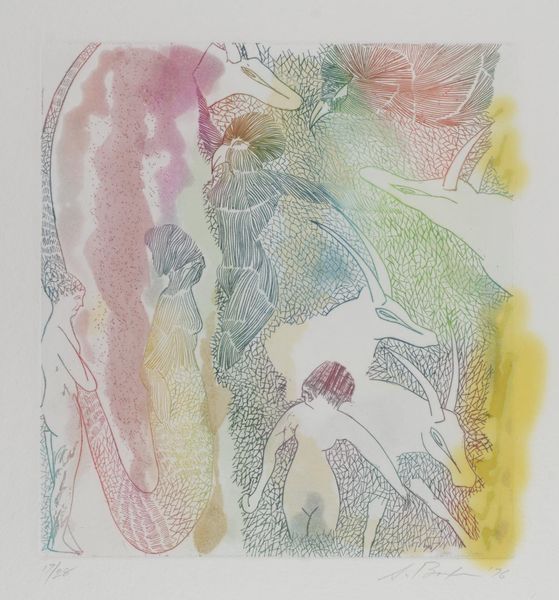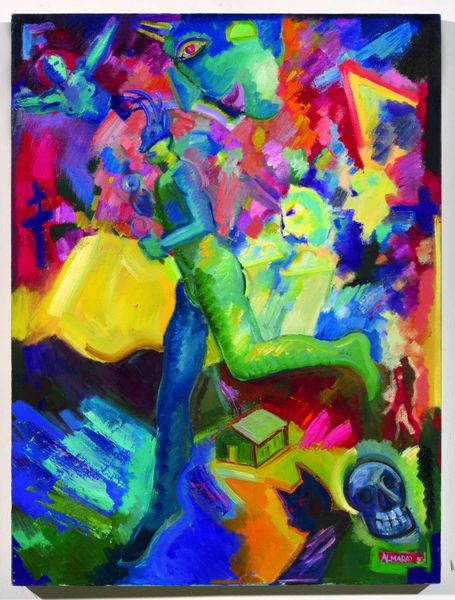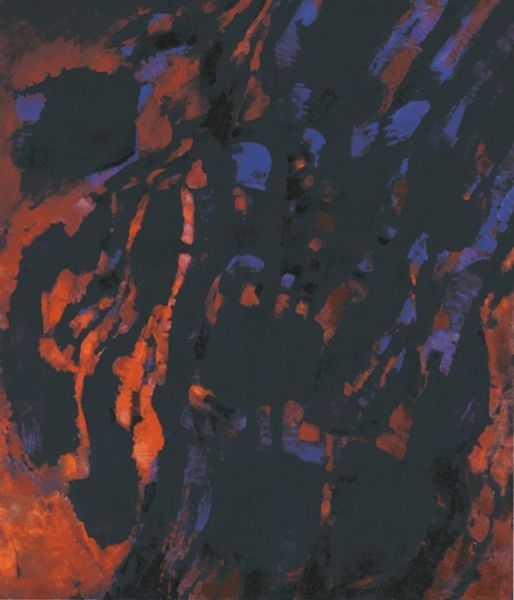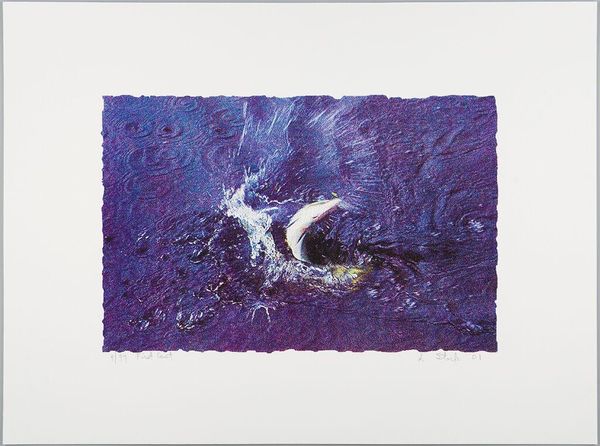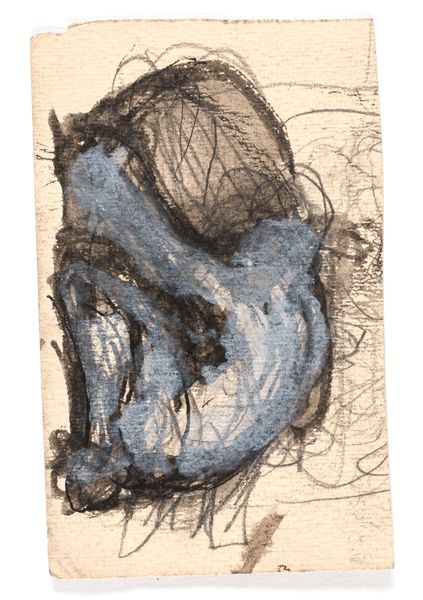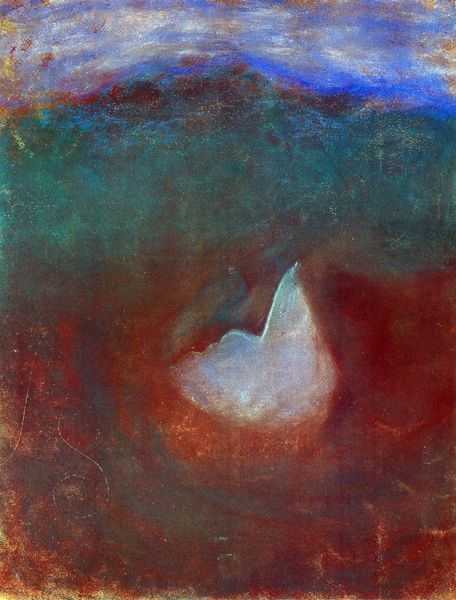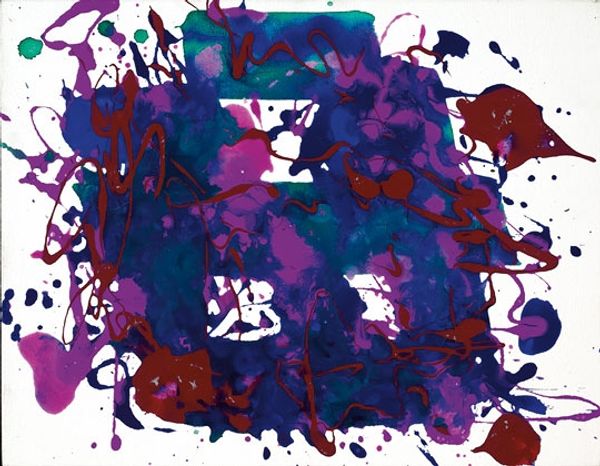
Copyright: Courtesy of the office of Rashid Al Khalifa
Editor: This is Rashid Al Khalifa's "Reclining Nude," painted in 1989 with acrylic paint. I'm really struck by the impasto and how tactile the surface appears. It almost looks sculpted. What can you tell me about it? Curator: Consider the context. Acrylics, in 1989, represented a shift from traditional oil paints. Khalifa's choice speaks to a move towards quicker drying times and perhaps a desire to engage with a more modern, readily available material. The impasto technique, using thick application of paint, emphasizes the artist's hand and the physical act of creation. It subverts the historical traditions of nude paintings that were about smooth skin and perfect form. Editor: So, the material itself challenges the high art tradition of the nude? Curator: Precisely. The painting embraces a kind of materiality, where the physicality of the paint itself becomes part of the subject. The choice of medium informs its meaning. It also calls into question the conventional methods employed by fine art. Note the colour choices too; vibrant violets, purples, and pinks that create a dreamy ethereal space. How do they strike you when considered alongside the figure? Editor: I hadn't thought about it that way, but now I see how the bright colors almost clash with the classical subject matter of a nude, adding to the feeling that the painting challenges traditional fine art norms. Almost as if the means by which this was made contributes meaning to the nude itself. Curator: Exactly. We must see not just the subject, but also acknowledge the significance of how materials can carry the meaning. And what can that ultimately say about the process of how meaning is produced? Editor: That's fascinating! I’ll definitely pay closer attention to the materials and process from now on.
Comments
No comments
Be the first to comment and join the conversation on the ultimate creative platform.
